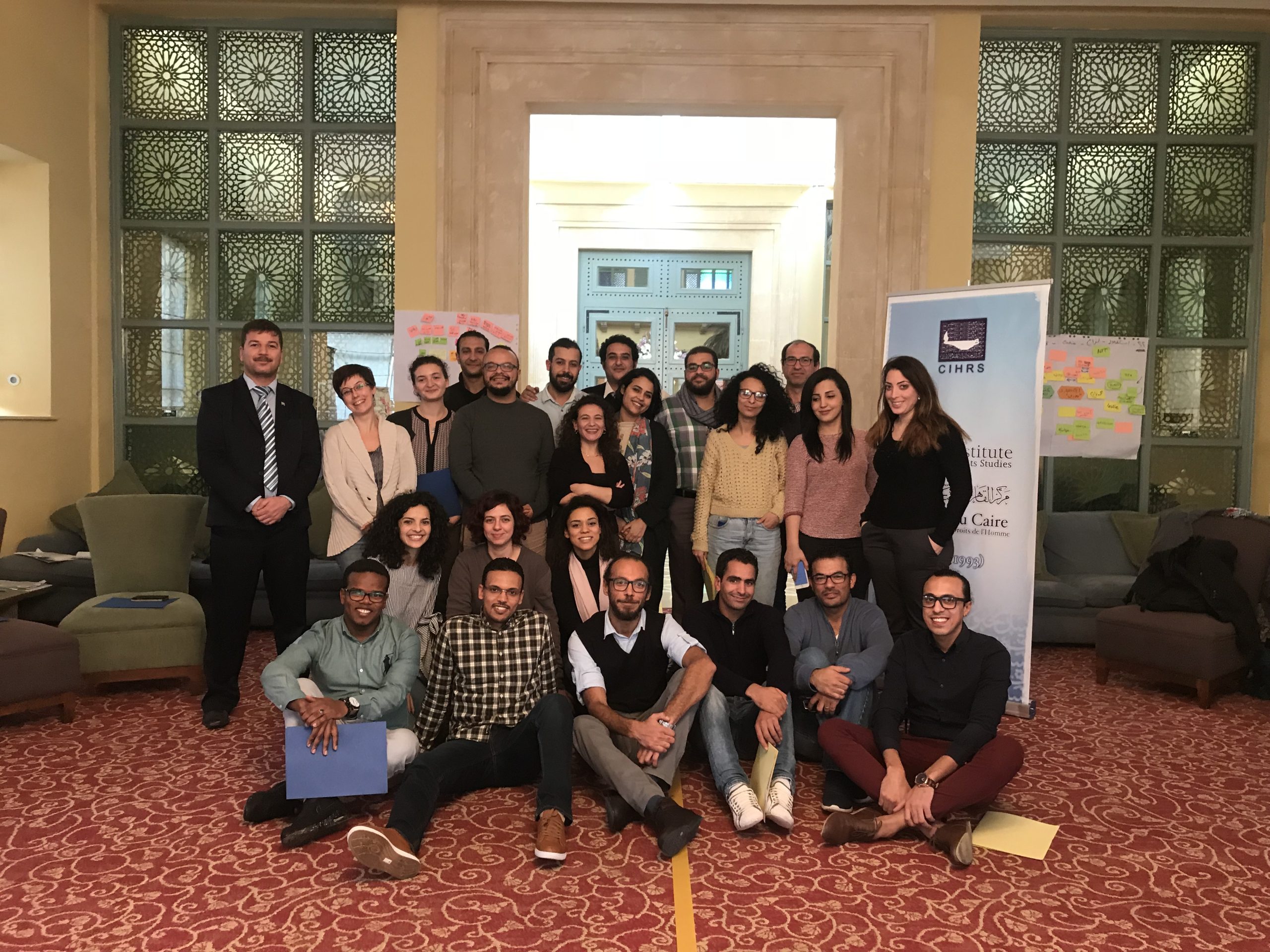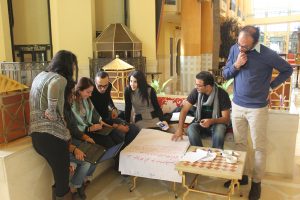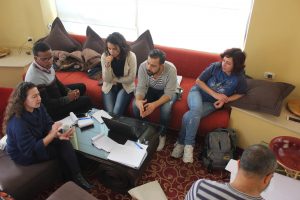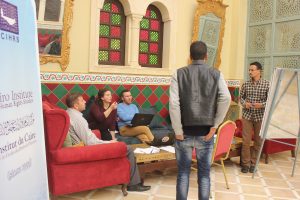On Sunday December 10, 2017, the Cairo Institute for Human Rights Studies (CIHRS) concluded its tenth regional training program on international human rights mechanisms (IHRM 10) in Tunis. Twenty human rights defenders from nine countries in the Middle East and North Africa (MENA), as well as a select group of trainers specialized in international advocacy and human rights, participated in the training program that began in early December. This year’s training was unprecedented in the diversity of its participants’ cultural, ethnic, and linguistic backgrounds and identities. For the first time, the IHRM training workshop featured substantial dialogue and critical engagement centered on sexual orientation and gender identity issues in the MENA region.
Participants from Palestine, Syria, Iraq, Sudan, Libya, Tunisia, Egypt, Algeria, and Morocco discussed and reflected upon human rights challenges facing their work in their home countries, including forced displacement, the right of peaceful assembly and association, and accountability and impunity. Participants and trainers alike remarked upon the IHRM 10 training program’s success in bringing together and building bridges between activists originating from a diverse array of backgrounds, providing them a safe space to work together and find common ground. The exchanges during the training further served as a source of inspiration. “Listening to the stories and aspirations of the participants and facilitators” gave a Sudanese participant “hope in being able to make a difference;” a sentiment shared collectively.
Participants noted the exceptional knowledge they attained from the trainers as well as from each other, with several participants accrediting these interactions with causing them to reassess and broaden their perspectives about the entire MENA region, particularly the ethnic and linguistic diversity in what is often referred to as the “Arab” region. For the first time, the training included participants from Kurdistan, Iraq, and the Amazigh minority in Western Sahara. There was also participants from the Tabu minority in southern Libya. Many of the participants had never met human rights defenders representing these ethnicities before, and they expressed gratitude for the awareness they gained about the significant human rights issues facing these minorities, issues typically excluded from mainstream or national narratives.
Over 38 sessions (60 working hours), the training program sought to improve participants’ capacity to draft and develop international advocacy strategies by deepening their understanding of international mechanisms in the United Nations and European Union; such as the OHCHR, the UN Human Rights Council, the UN Security Council, the UN General Assembly, and EU institutions; as well as engagements in various capitals. International humanitarian and human rights law, together with accountability for violations of international law, were also prominent topics in this year’s training. Participants learned how to engage in joint advocacy with INGOs, regional NGOs, and local NGOs, as well as in outreach to local and international media and rights platforms while maintaining personal and digital security. There was also a cultural component to the training, with participants commemorating International Human Rights Day by attending a film screening on human rights in Libya, presented by CIHRS with the support of the European Union.
In the practical training exercises, each group of trainees designed an international advocacy campaign following specific steps and rules laid out for each report, with the goal of advocating with the international community or specialized bodies to adopt decisions or core reforms on issues raised by each report. In these sessions, trainers illustrated examples of similar advocacy campaigns launched by local and regional rights organizations that brought about UN resolutions or successfully pressured particular governments to take a stance on a specific rights issue or refrain from adopting a law or measure that would violate human rights. In the US advocacy sessions, the case study “From Palestine to Ferguson” was utilized to illustrate effective international solidarity and advocacy. Another prominent theme of this year’s program was the increased number of human rights defenders working in exile and the challenges they face while advocating for issues on their home countries, as well as working with their compatriots in exile.
The IHRM 10 training program was an outgrowth of CIHRS’ Theory of Change (ToC), which furthers human rights causes and reforms in the MENA region by linking local and grassroots actors to international institutions through the coupling of local, on-the-ground campaigns with effective international advocacy. For a decade now, CIHRS has organized the IHRM training program as one of the core components of its Human Rights Education (HRE) program, which seeks to educate on human rights issues and disseminate a human rights culture. The training strives to improve the capacities and professionalism of civil society in the Middle East and North Africa and encourage heightened engagement with the international community through available advocacy mechanisms, thereby improving the status of human rights in the region and addressing major challenges currently facing most Arab countries and threatening the safety, lives, and dignity of their citizens.
Share this Post





